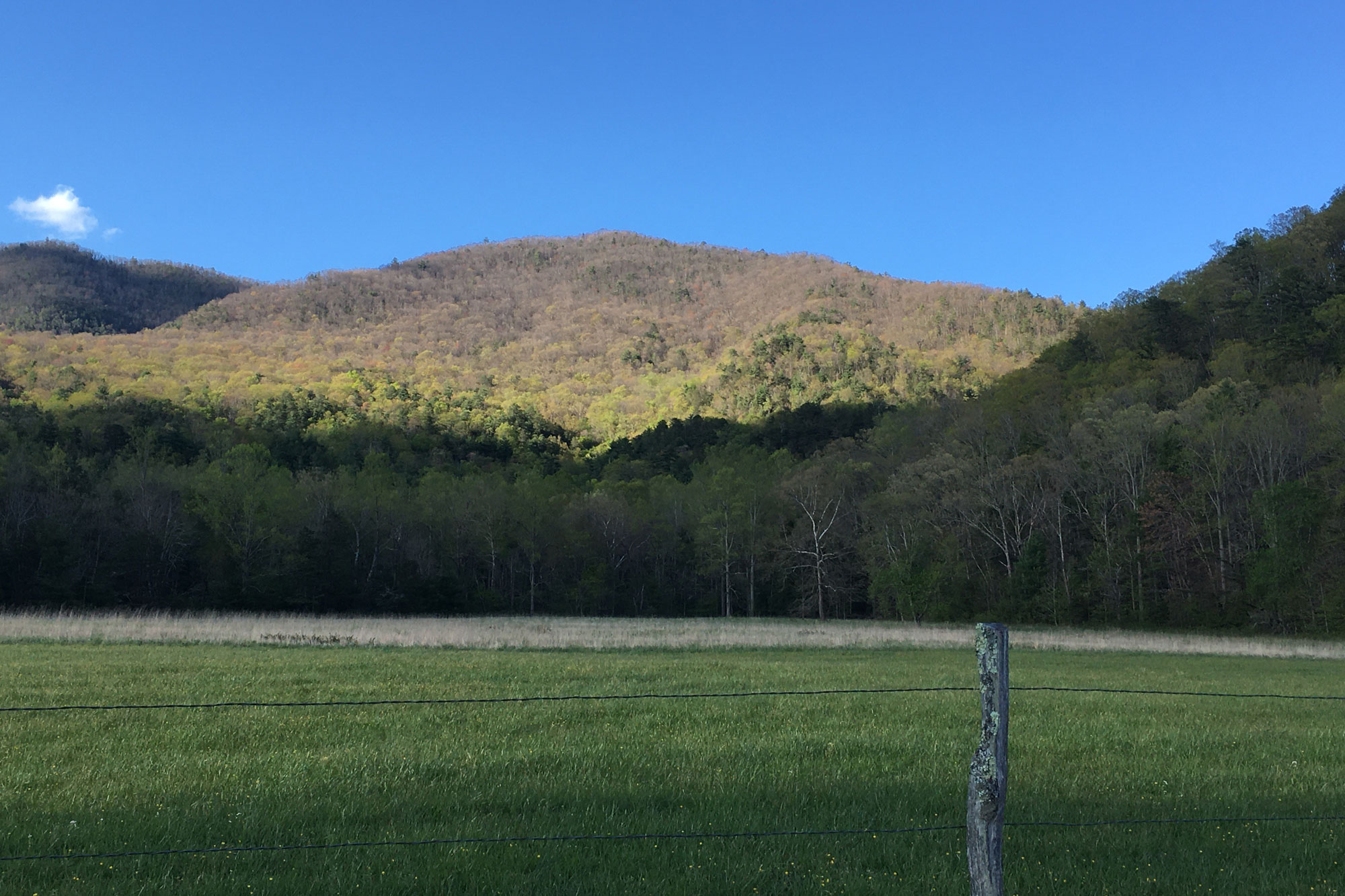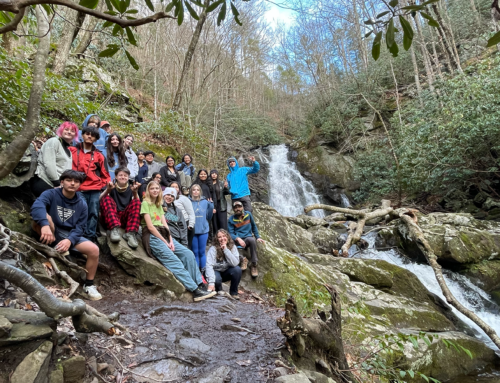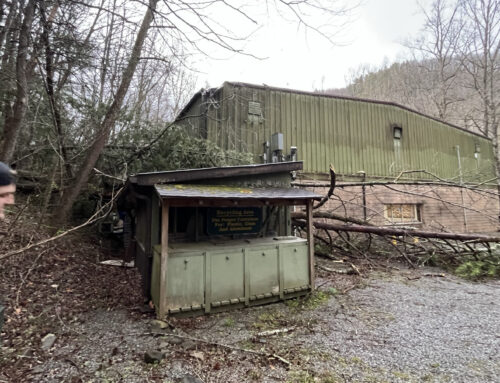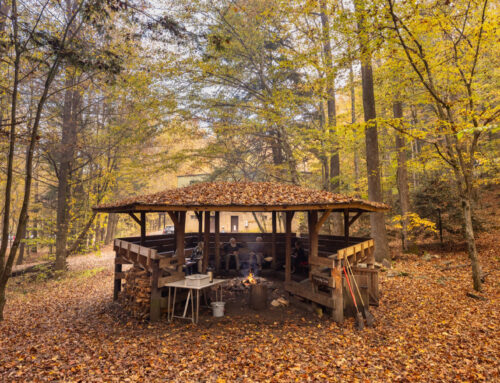Written by Joey Terlizzi, Teacher Naturalist
Here in the valley, it is abundantly clear that spring has arrived: Fodderstack is now green all the way to the top, trails are flanked by wildflowers, and every morning I am awakened, only a little bit irritated, by the dawn chorus of newly arrived songbirds. For many, myself included, spring is a time of renewed vigor. Long days and warm weather are returning, bringing with them new life, new colors, and some much-needed vitamin D.
There are very few who grieve over the close of winter, what with all the coldness, short days, and dry skin. However, as the valley fills in with new leaves, bustling pollinators, and ceaseless birdsong, I find myself mourning the loss of what, for me, has become the scenic hallmark of winter: the geologic history of these mountains. While spring may dazzle us with new colors and fresh life, winter’s fallen leaves reveal the rocky topography that tells the story of the Appalachian Mountains, holding it aloft with as much brilliance and beauty as any blooming heath bald.
As one gazes over these mountains during most of the year, the rolling green lushness of the filled canopy gives the landscape an air of uninterrupted peace and calm. The true history of the Smokies, however, is anything but tranquil. Formed in the center of the supercontinent, Pangaea, over 400 million years ago, the Appalachians were forged by eons of tectonic collisions, continental uplift, and buckling rock layers, eventually reaching heights comparable to the modern-day Himalayas.
After Pangaea started to split apart, the landscape was then ravaged by millions of years of weathering and erosion: rocks broken apart by ice and carried away by water and gravity; broad swaths of land slumping down the mountainsides; rivers cutting deeper and deeper through bedrock, carrying with them the silty memories of the mountains.
In winter, after the leaves have fallen, one can immediately see these processes still at work today, shown in stark relief under the denuded forest. Mountaintops, which in summer seem smooth and gentle, are revealed to be craggy and uneven. Previously hidden bluffs are uncovered, as are the bits of rock that have split from them and begun their tumultuous journey downhill. Creeks’ and rivers’ entire courses are lined with boulders that have tumbled into them. It is readily apparent that the mountains are crumbling away beneath our feet, emptying into the waterways and out to the ocean.
All of this chaos will soon be completely hidden once again. The landscape is quickly filling in with new growth, drowsy cubs, and all kinds of flying things. But as I tune in to the biotic drama unfolding all around me, I am sure to remind myself that the ground underneath it all is not merely the backdrop, but an active player, constantly changing and altering the courses of all the beings that call it home.







